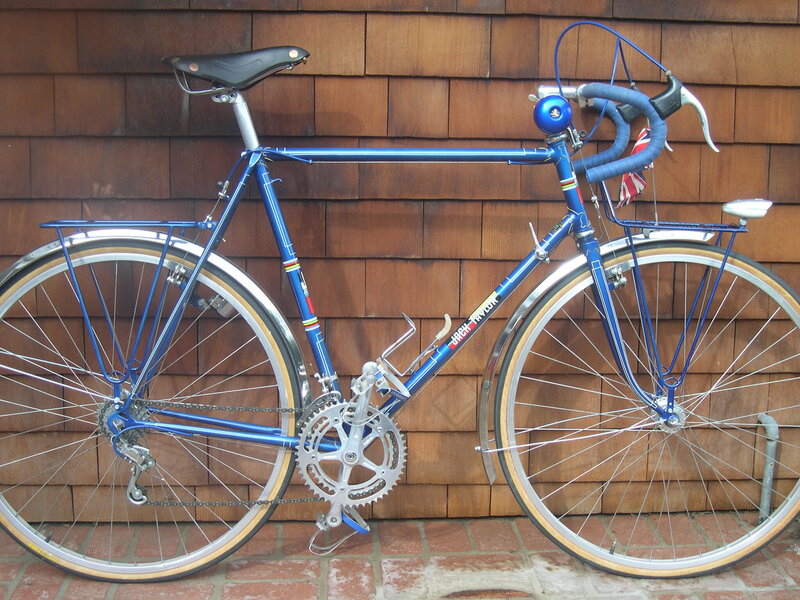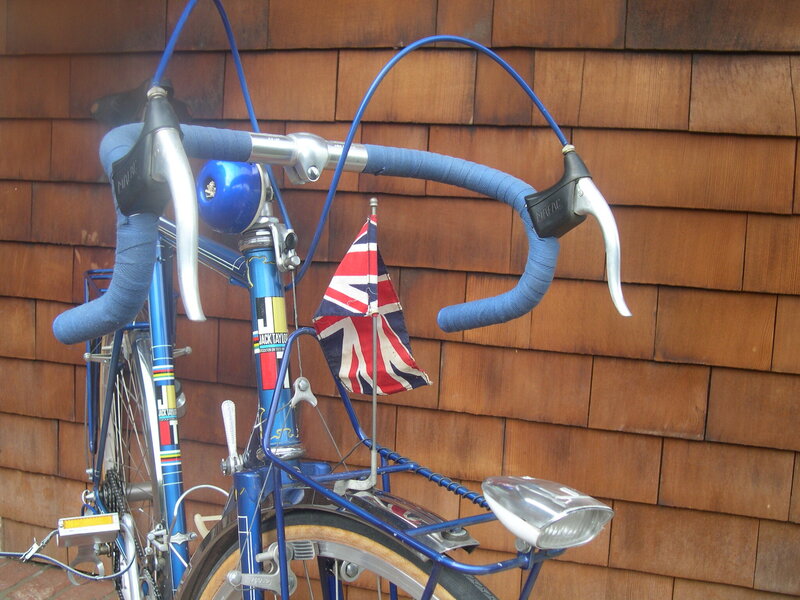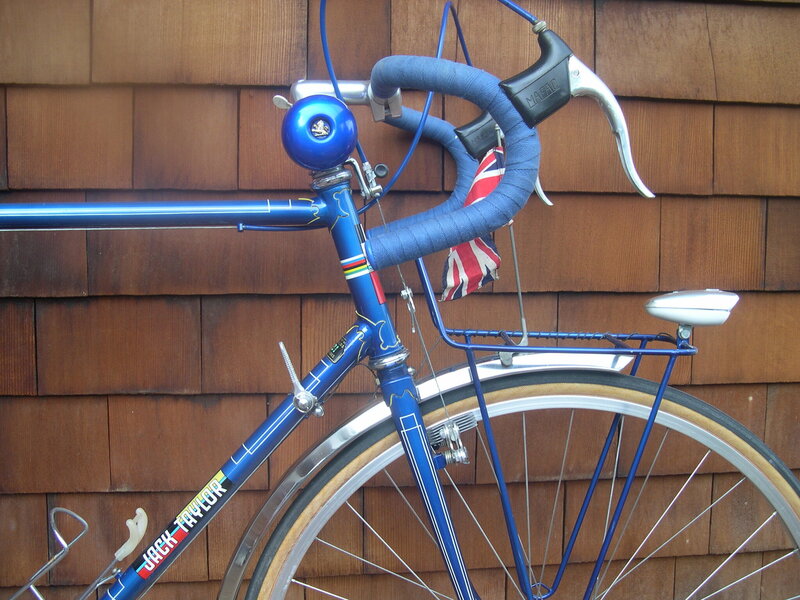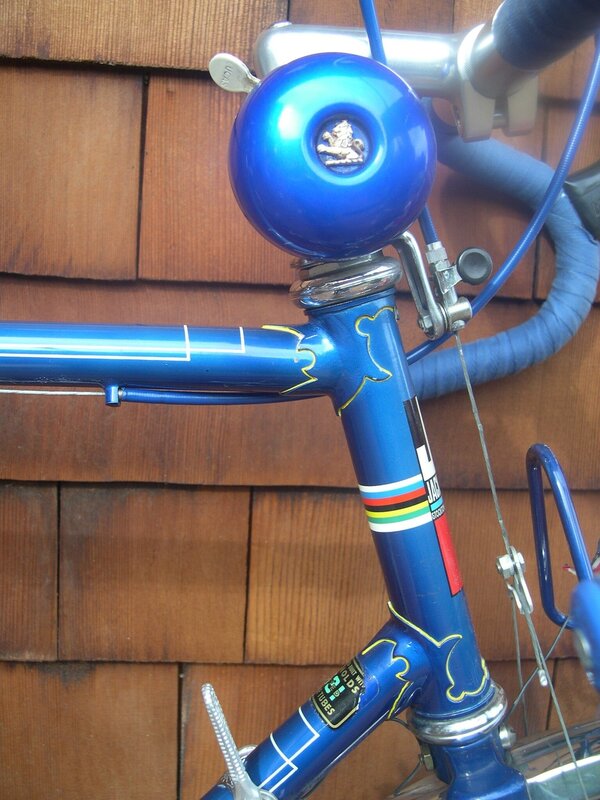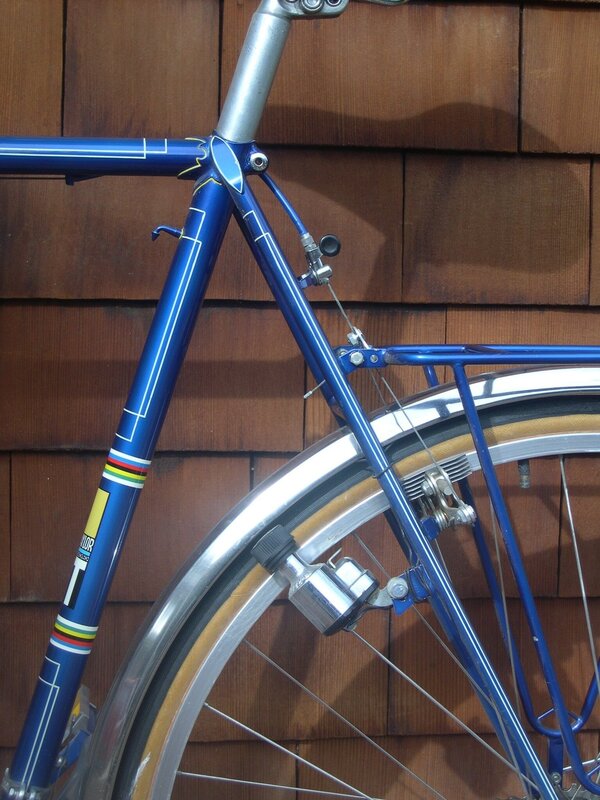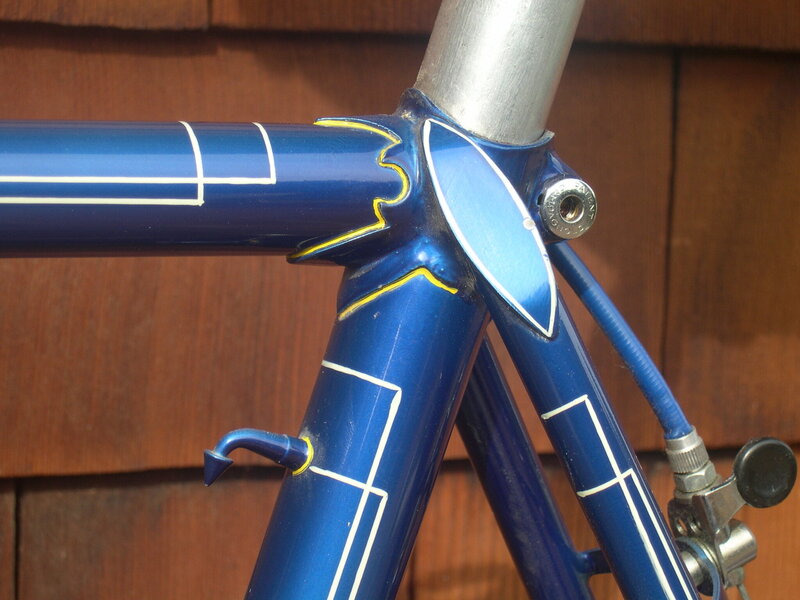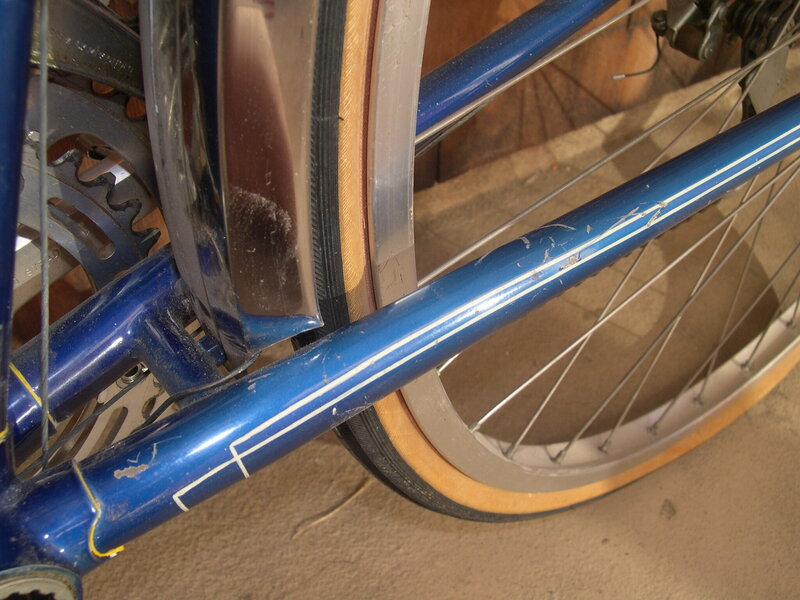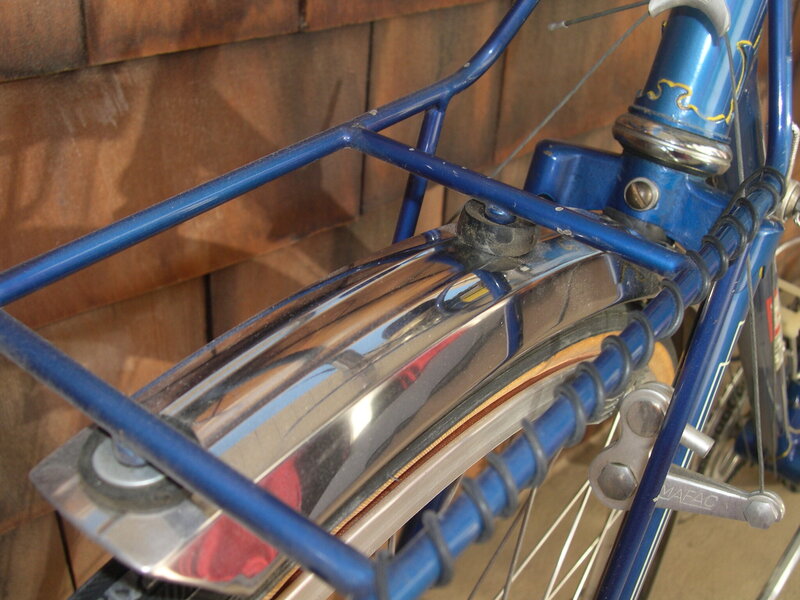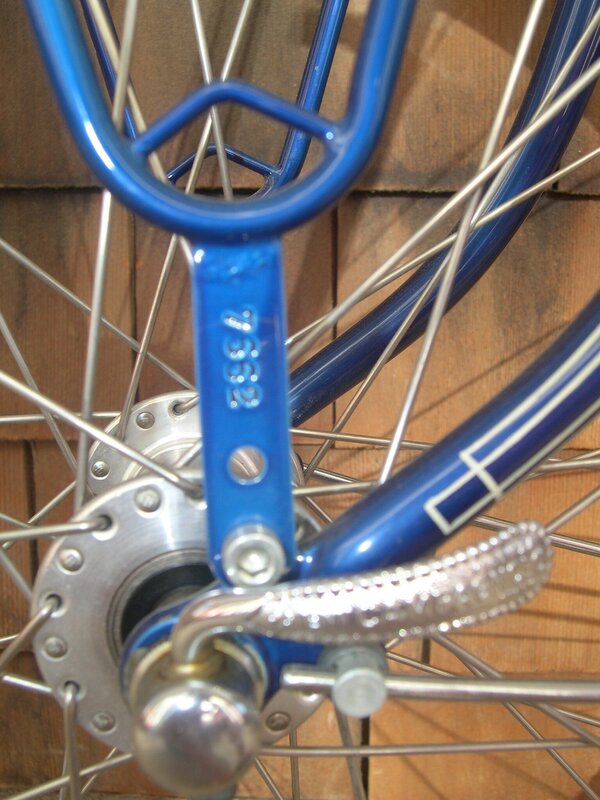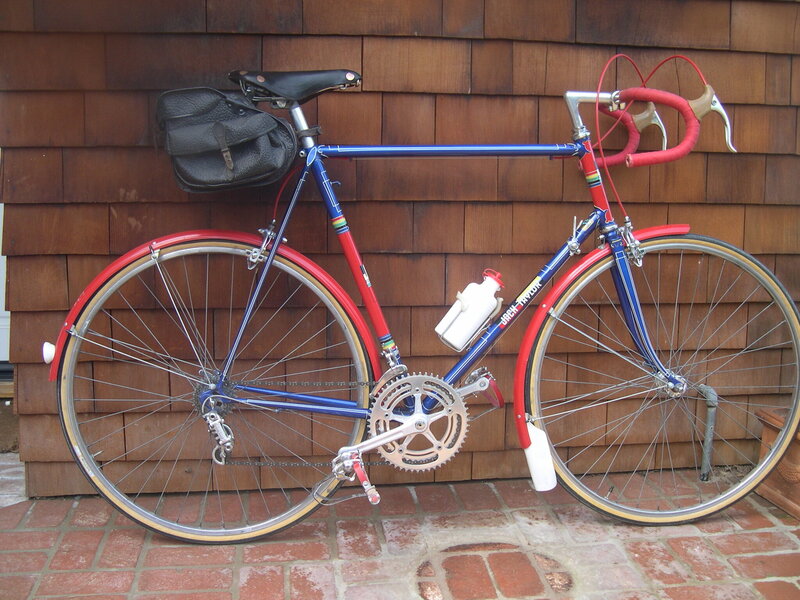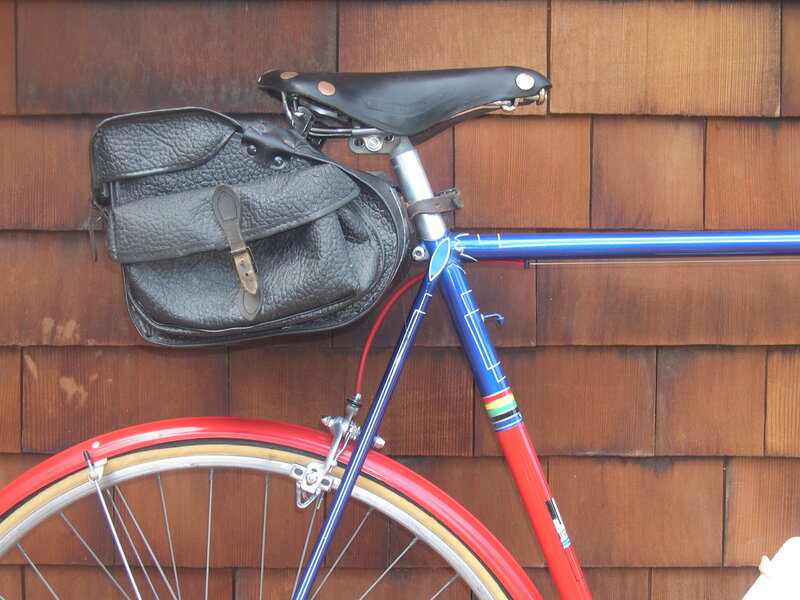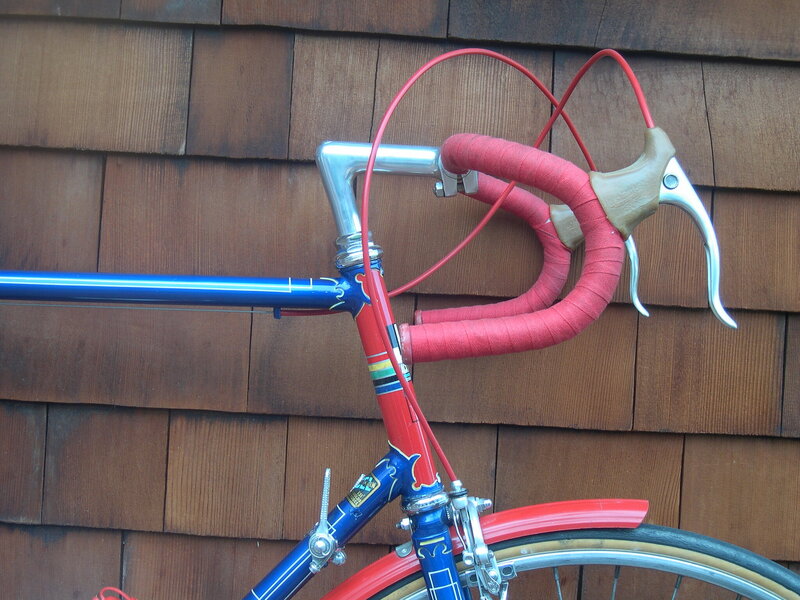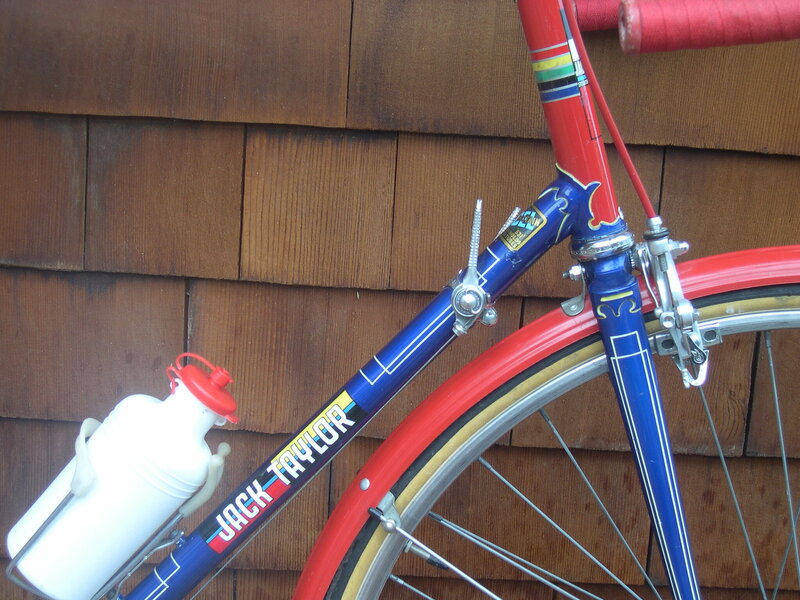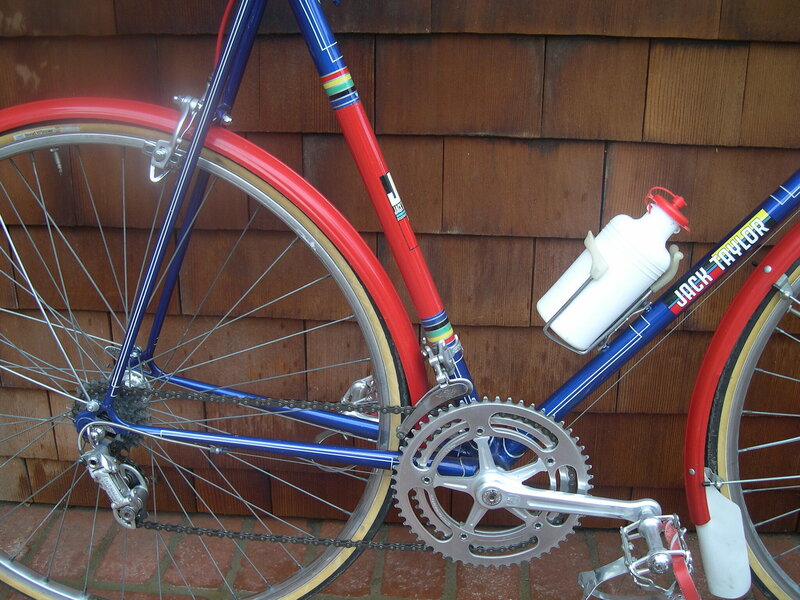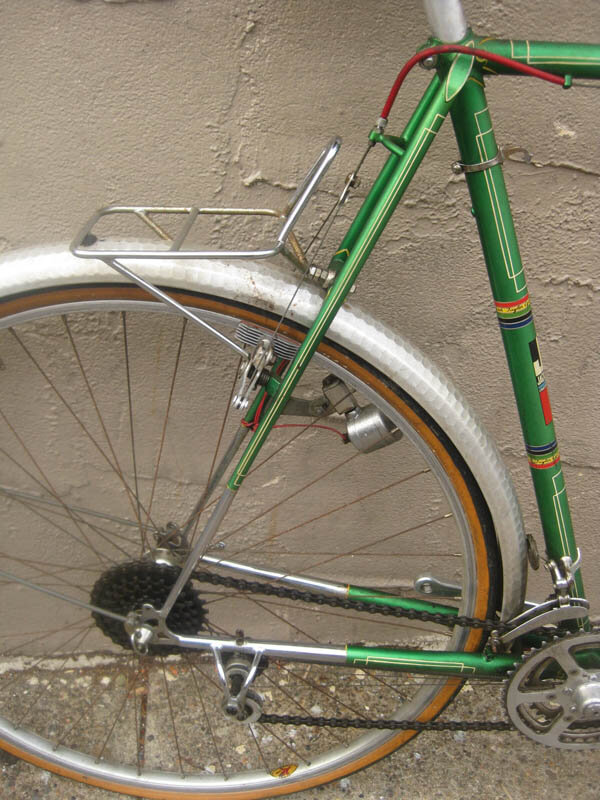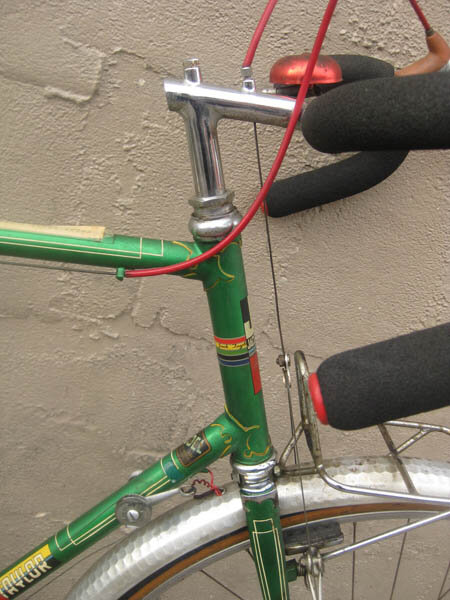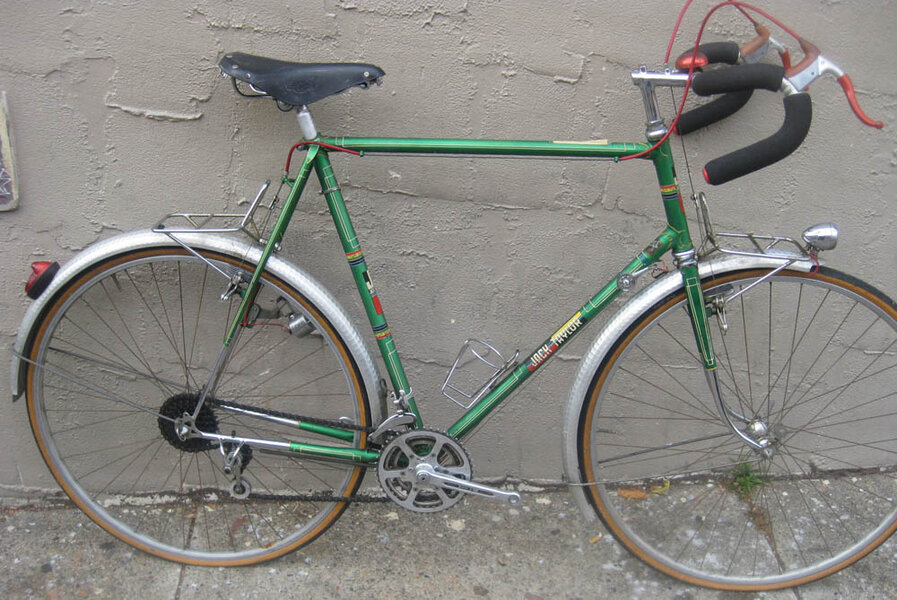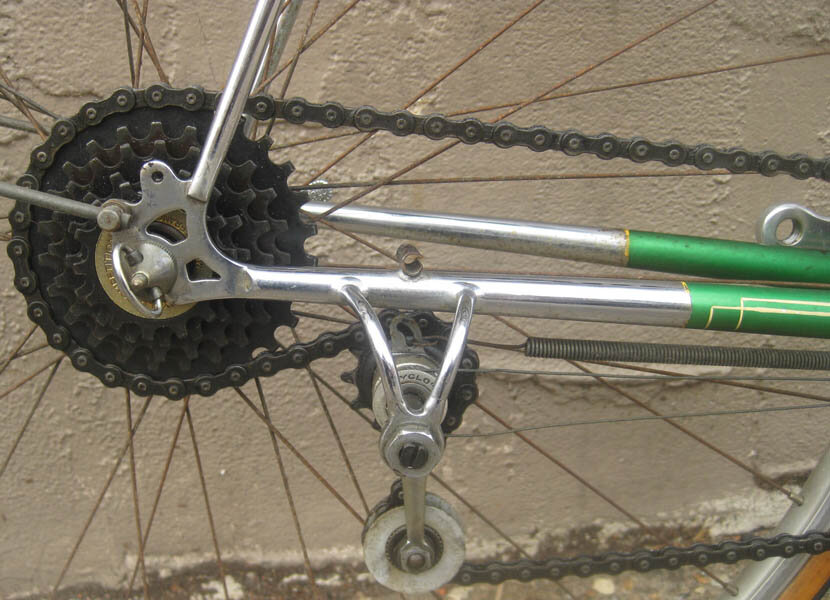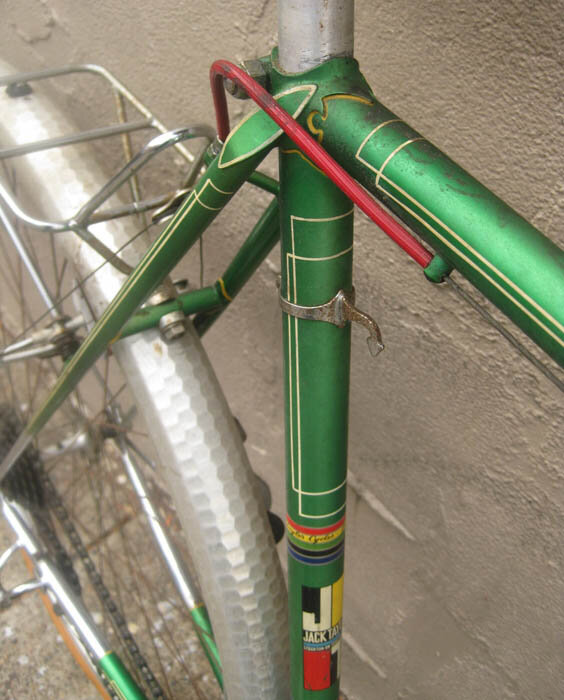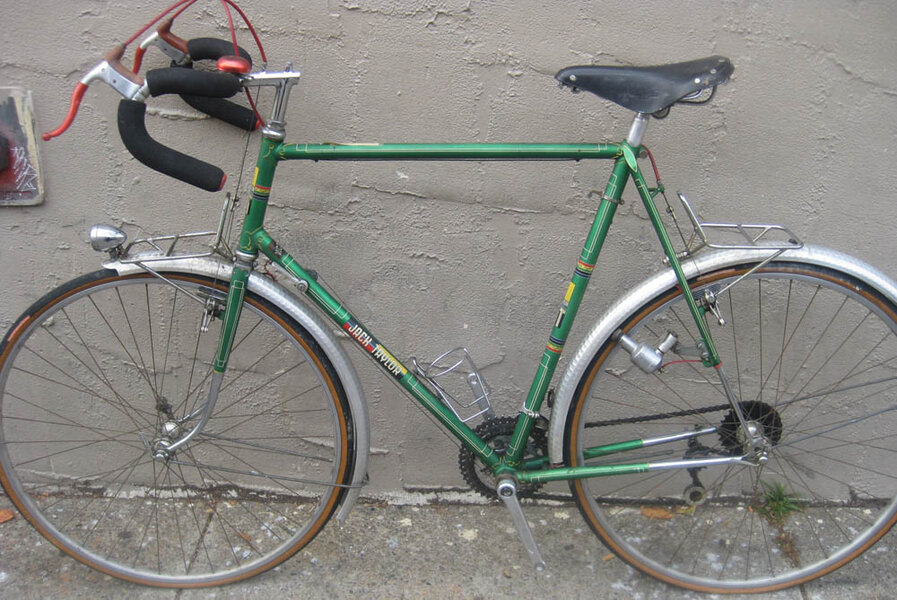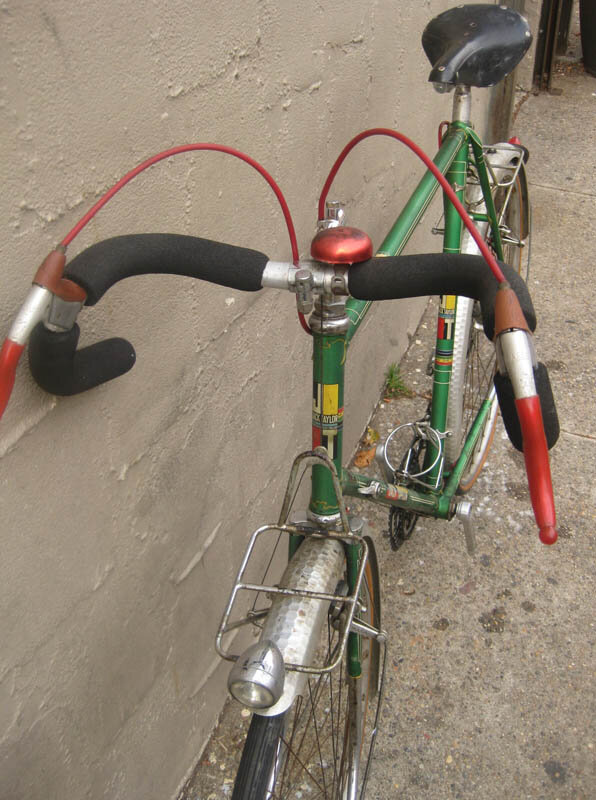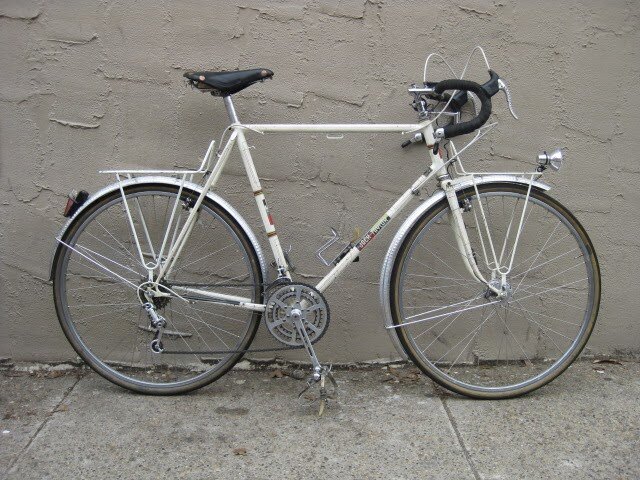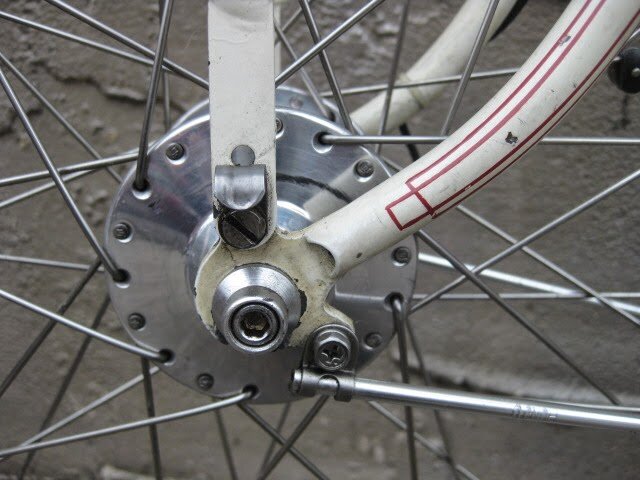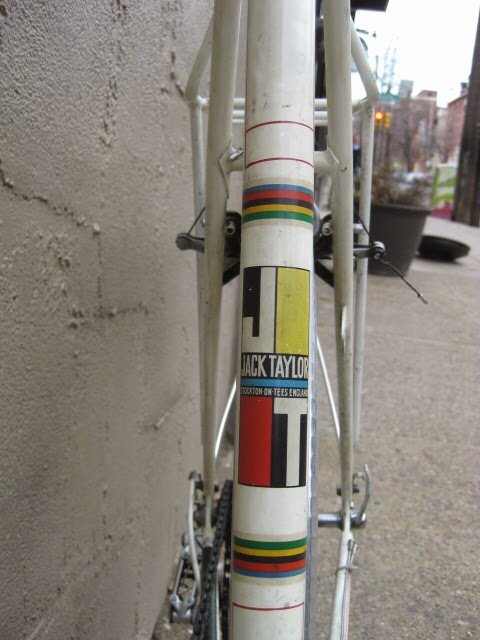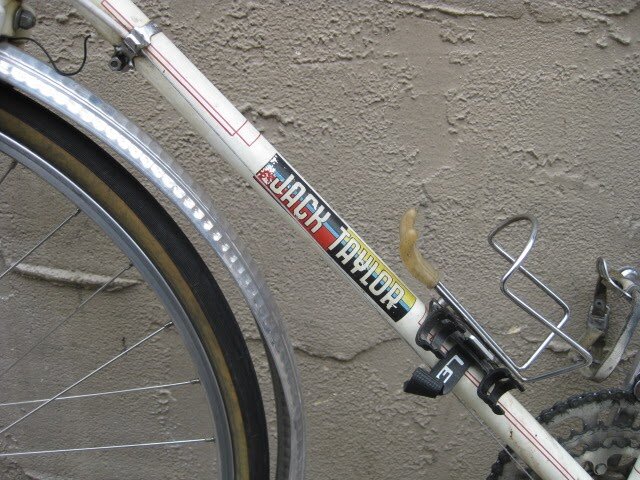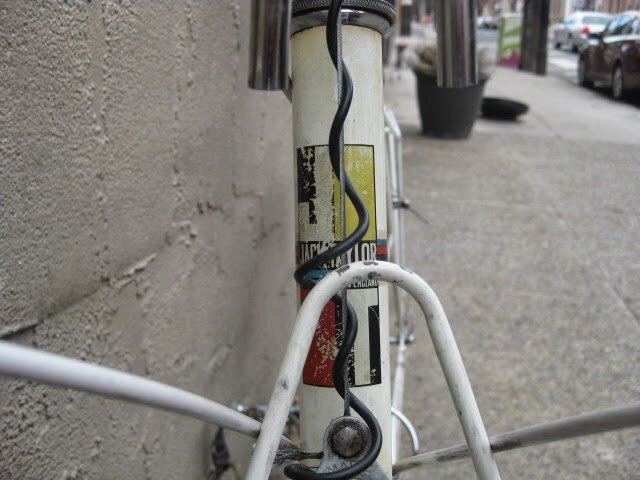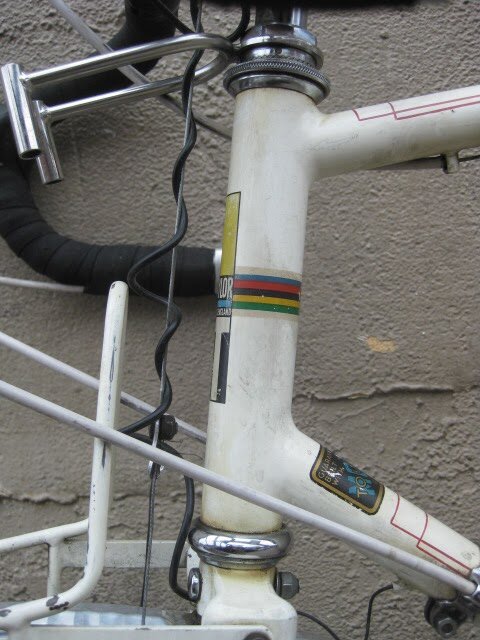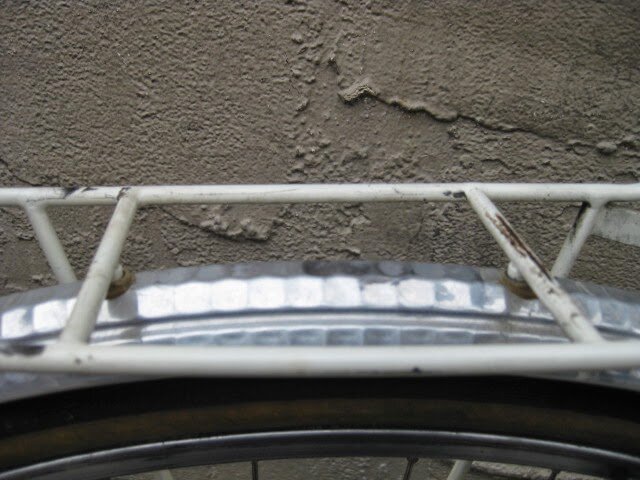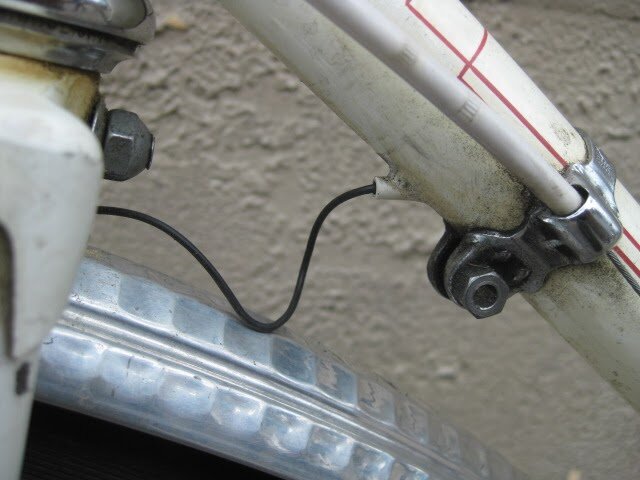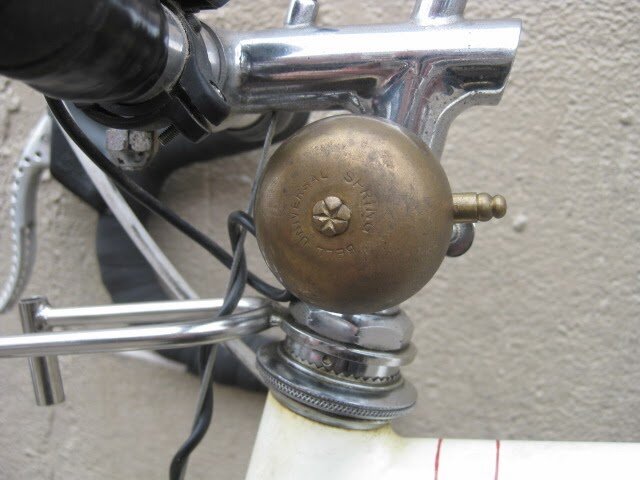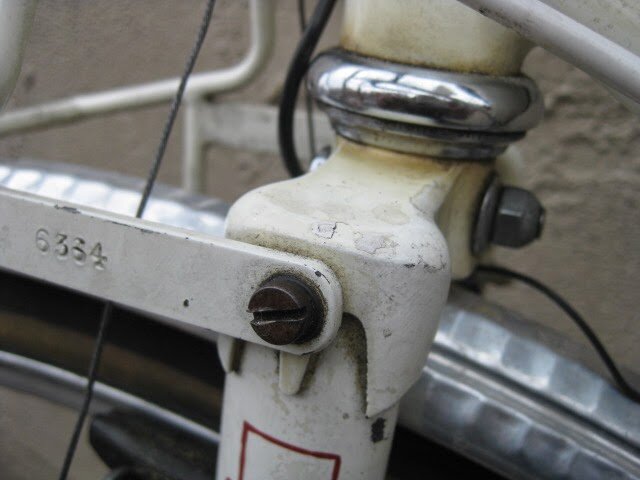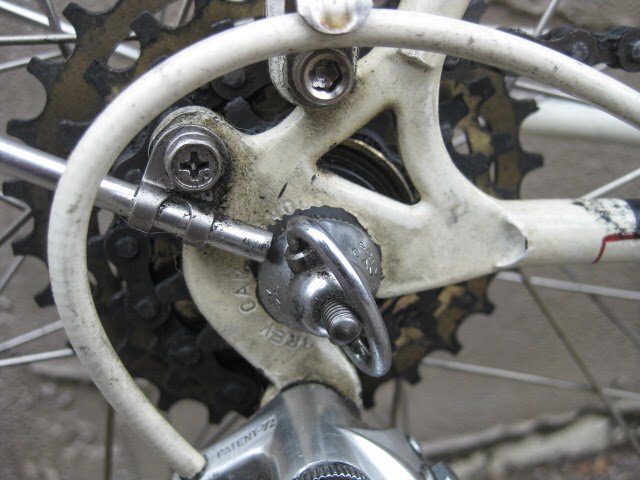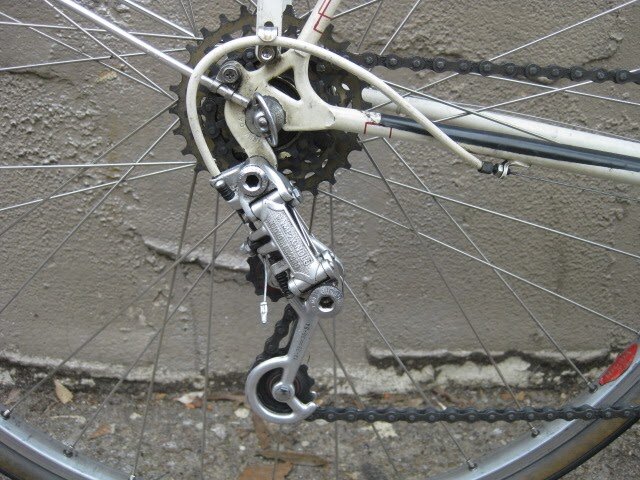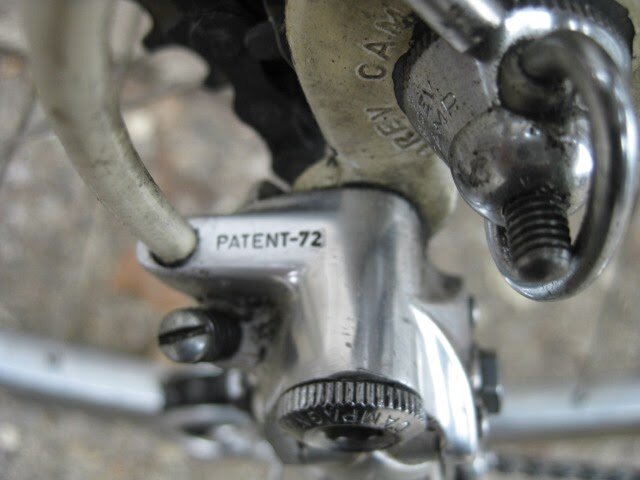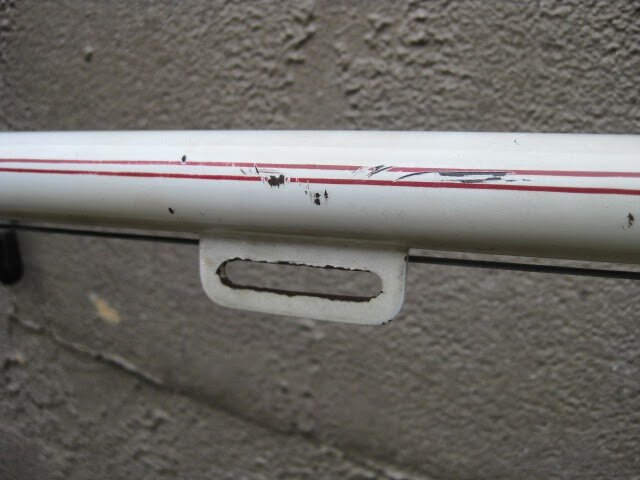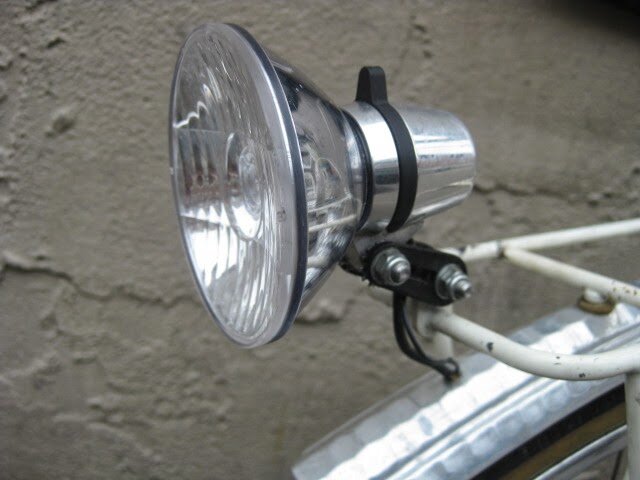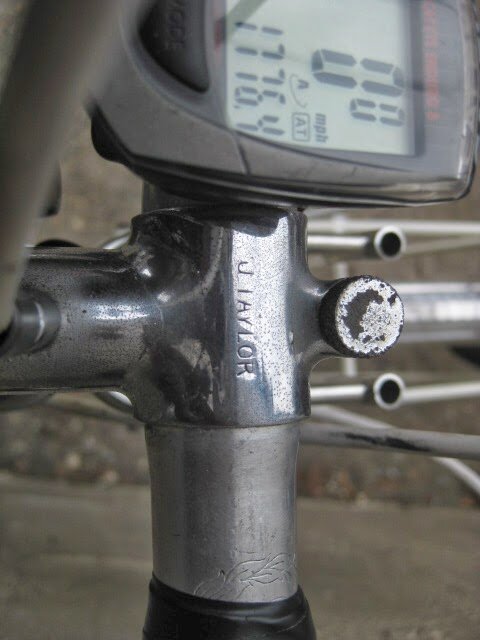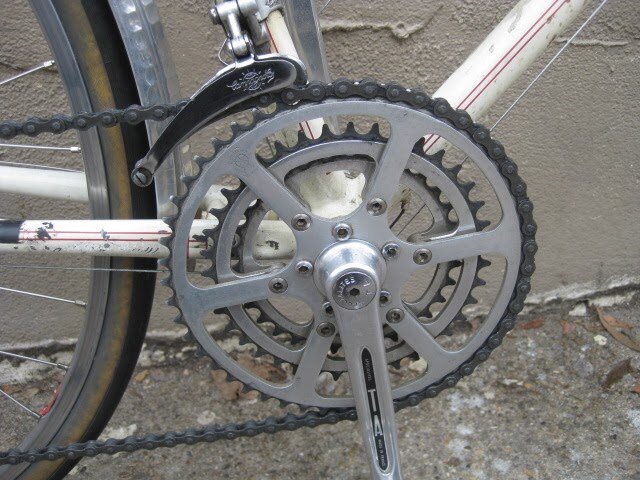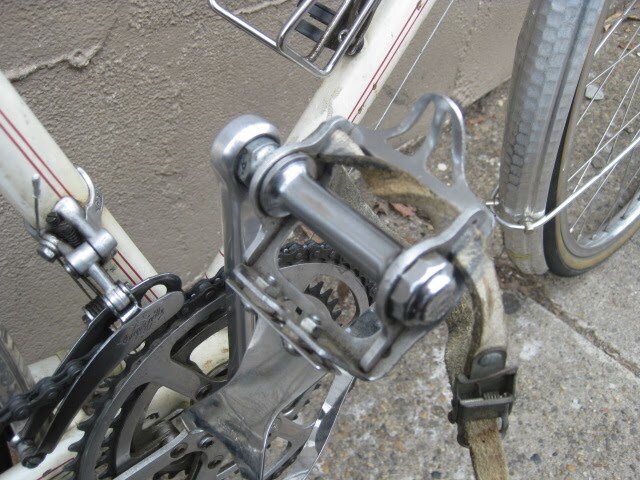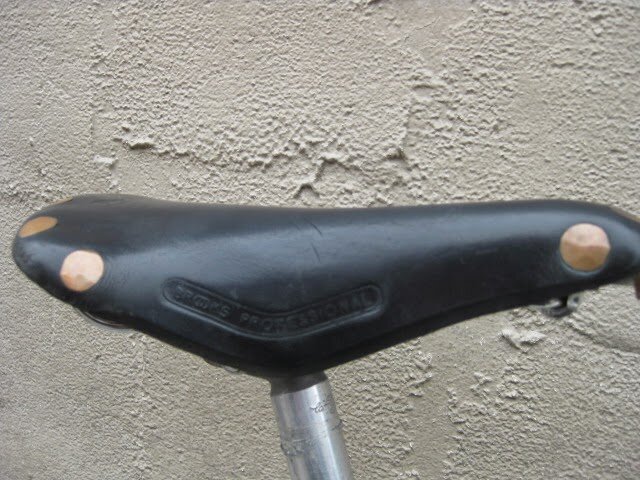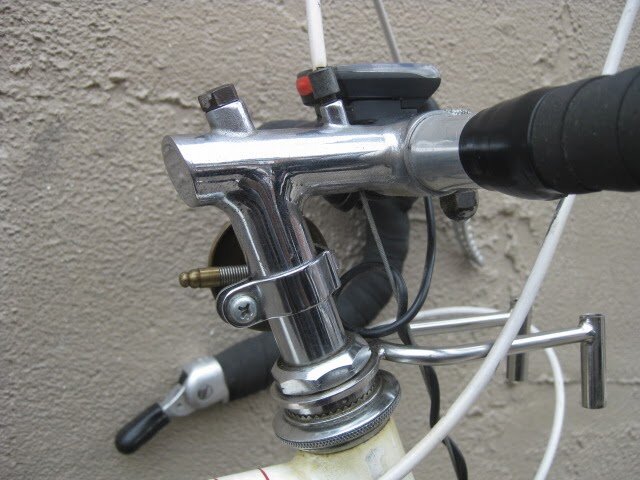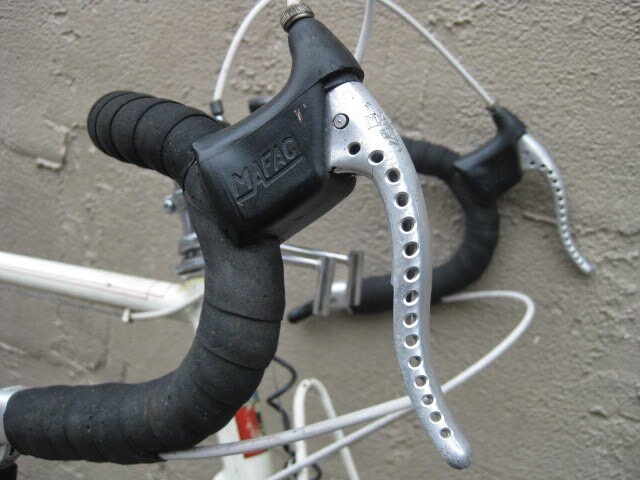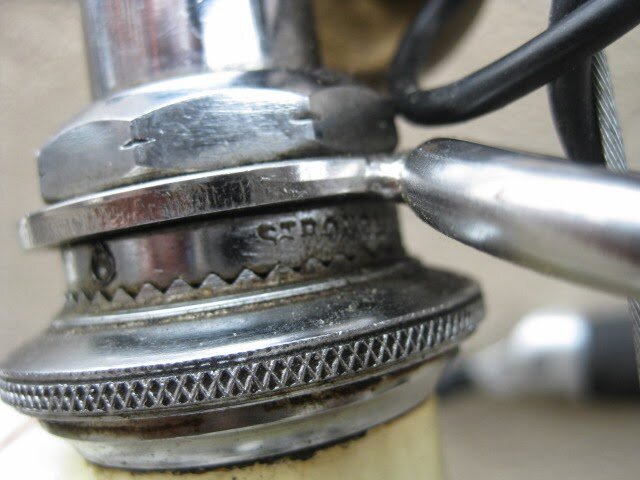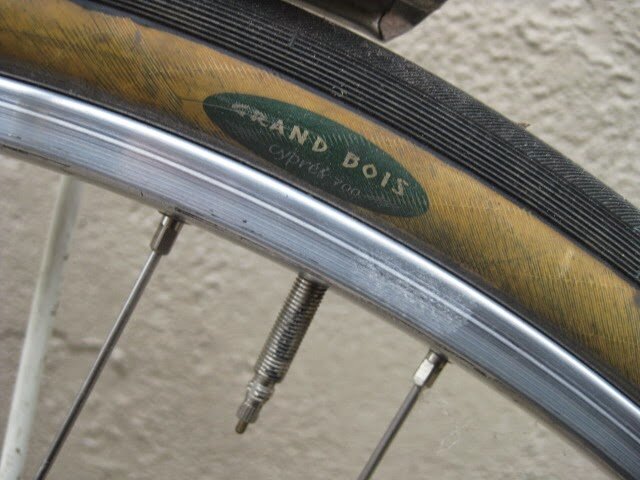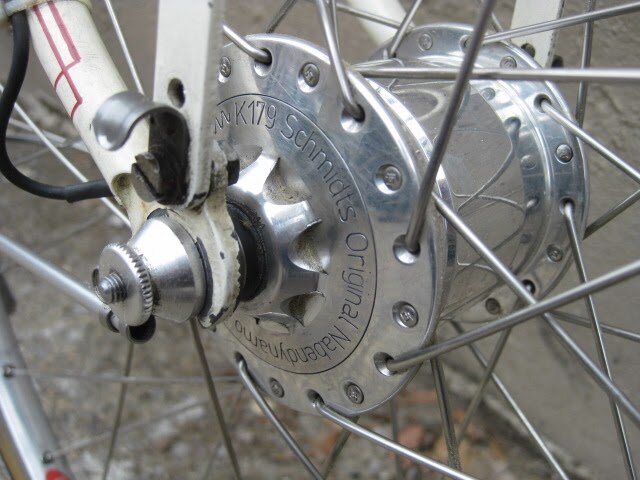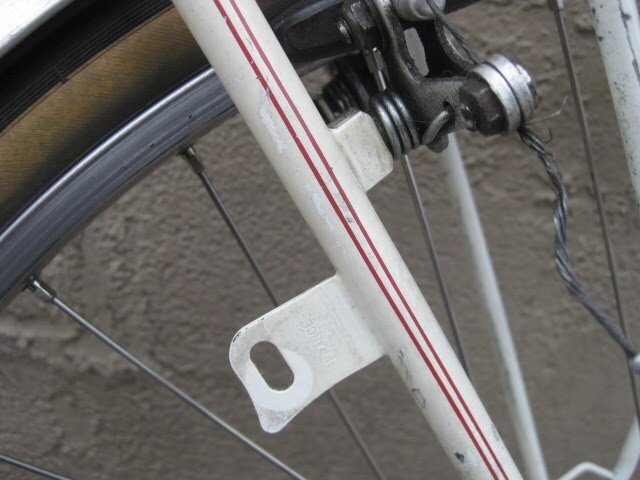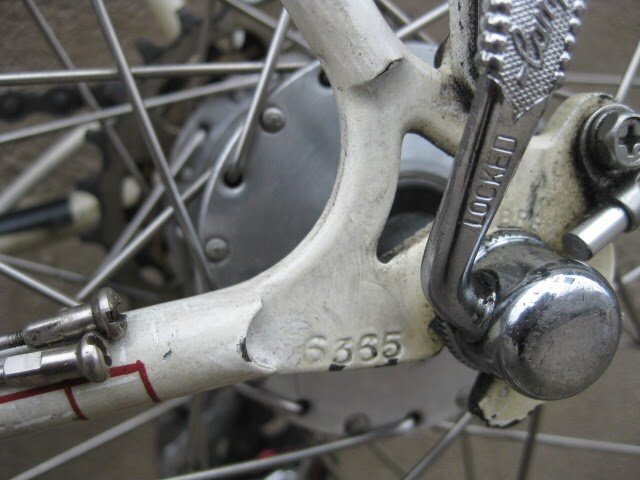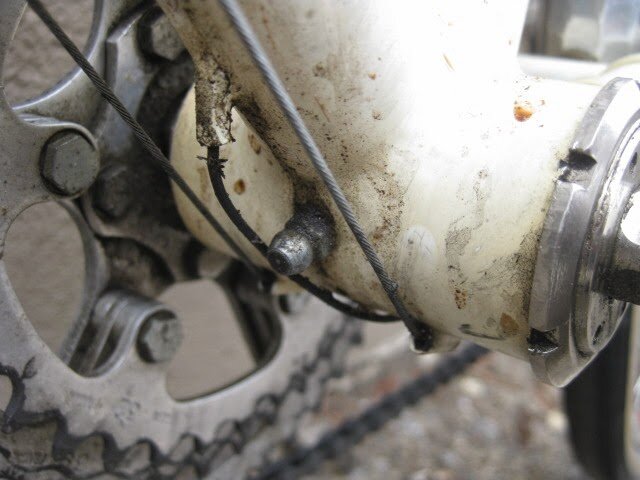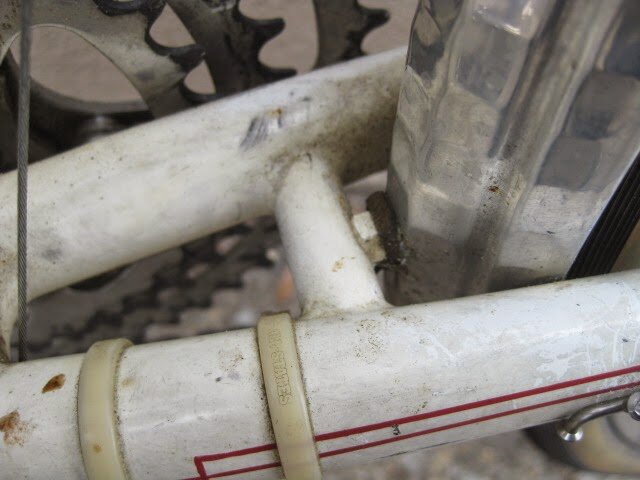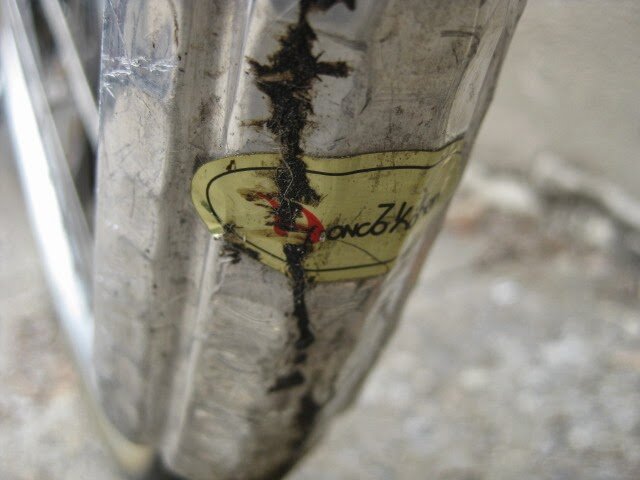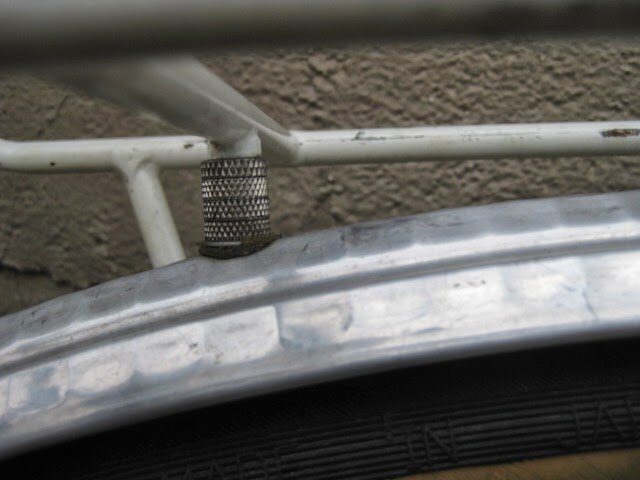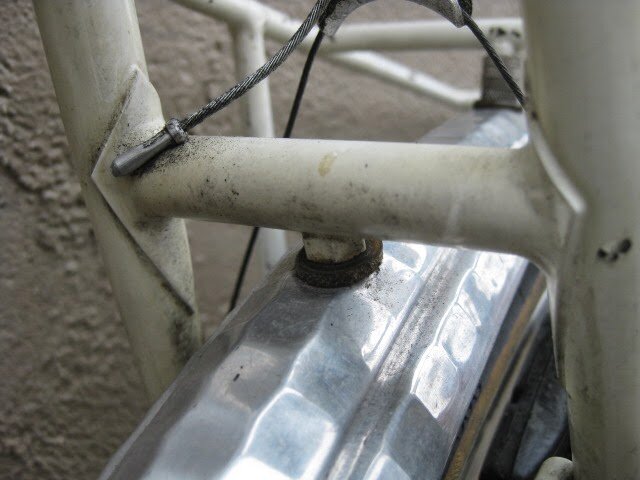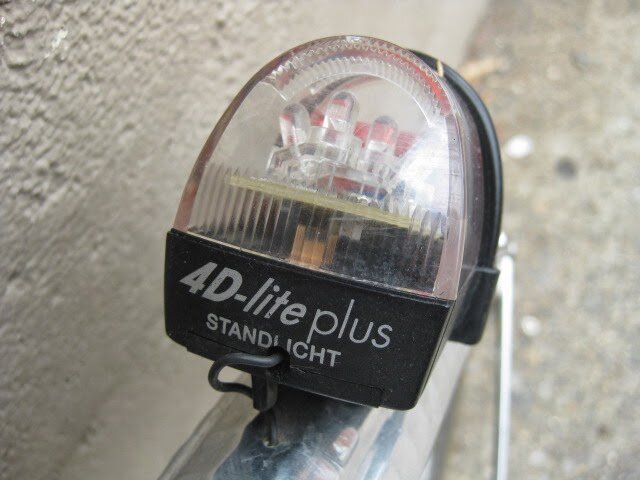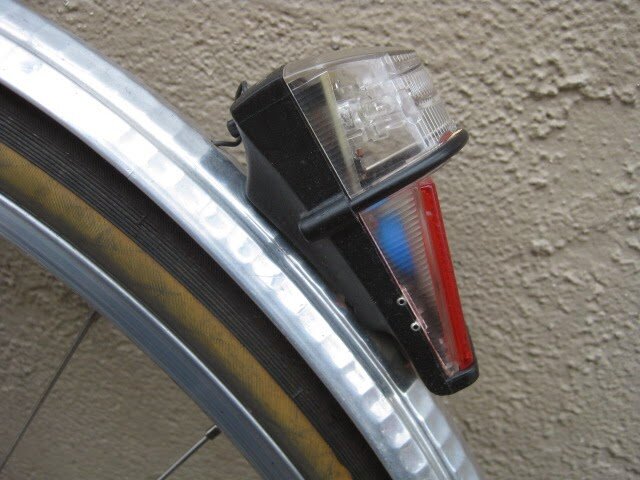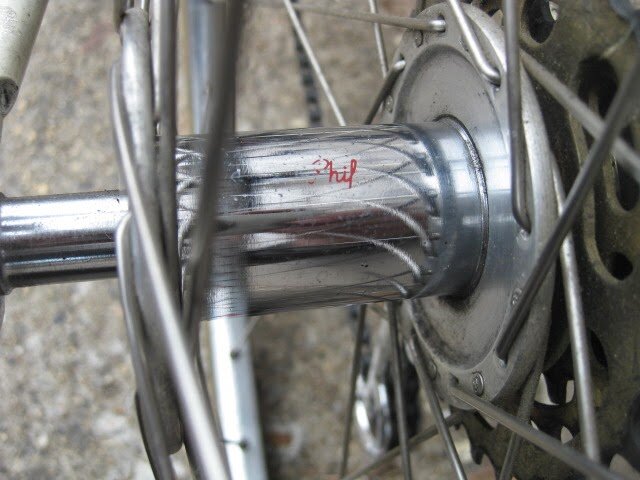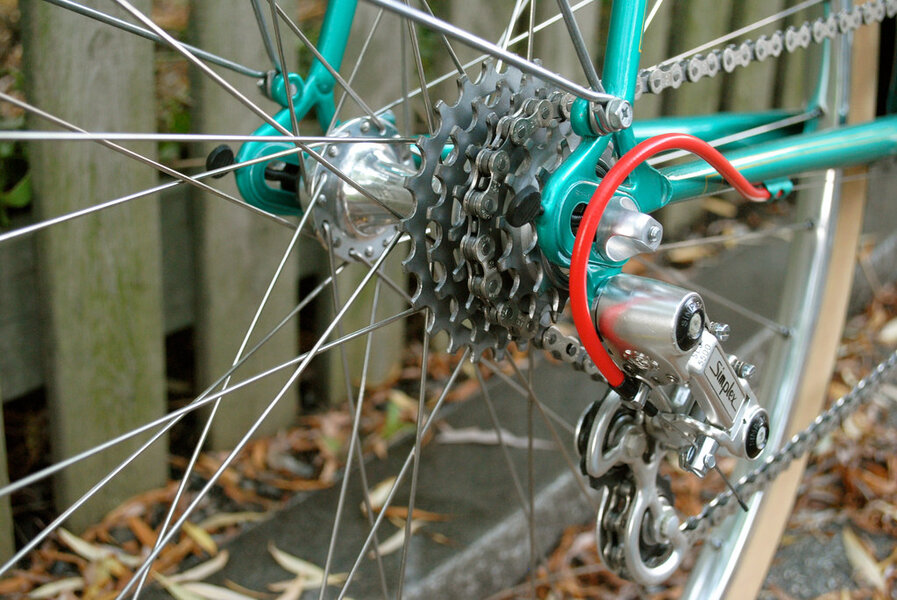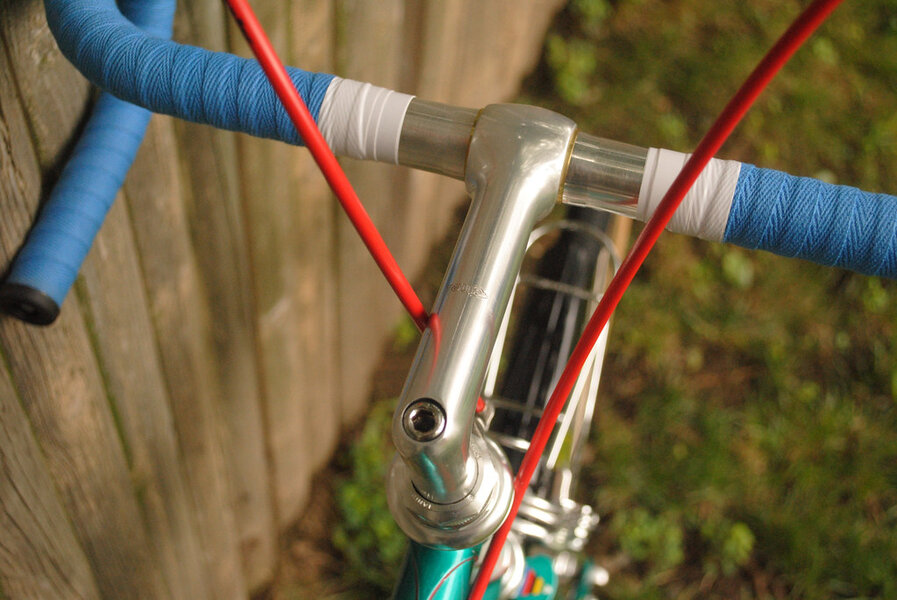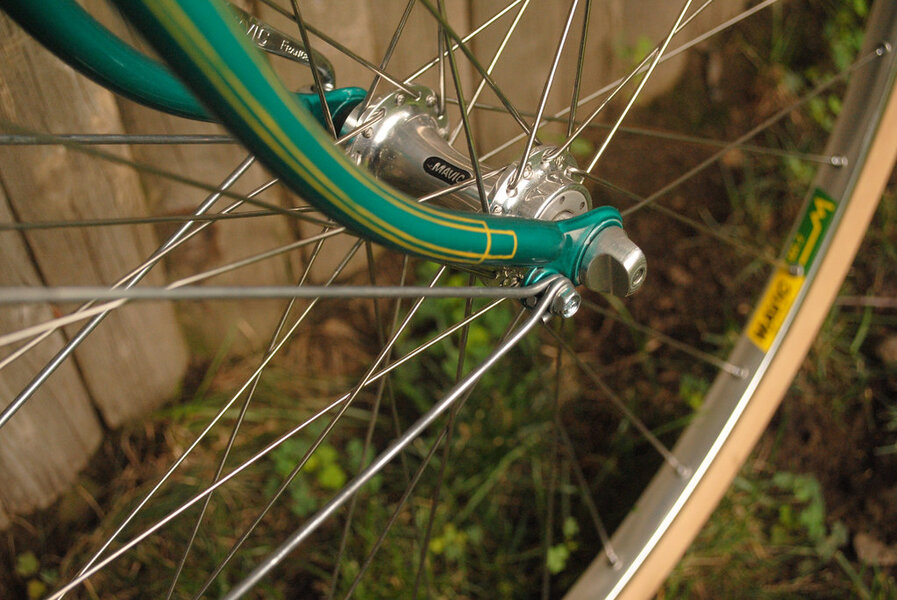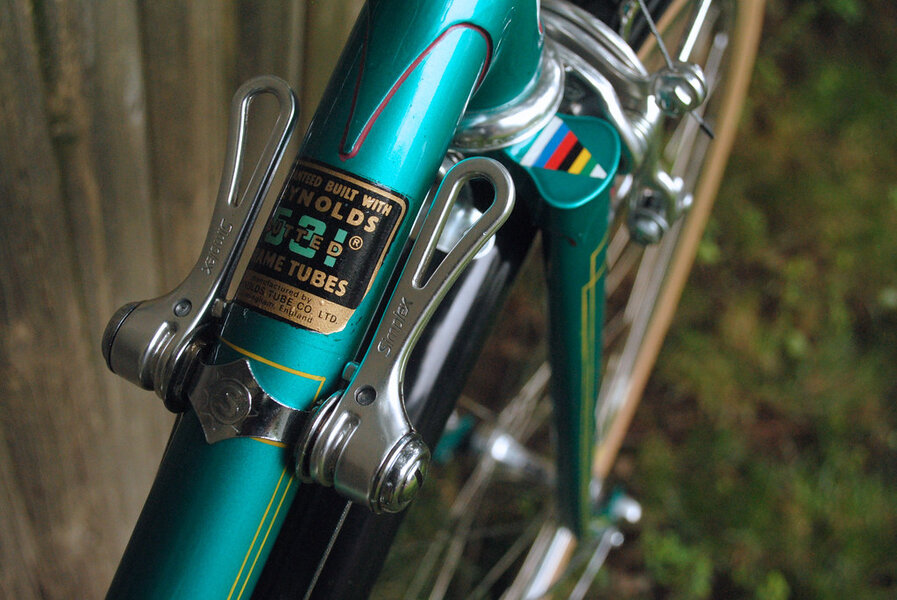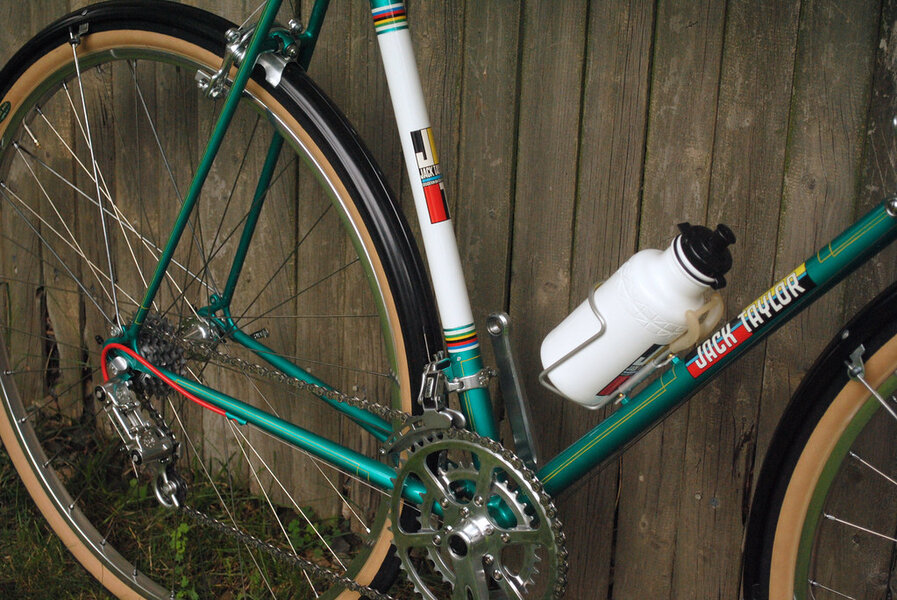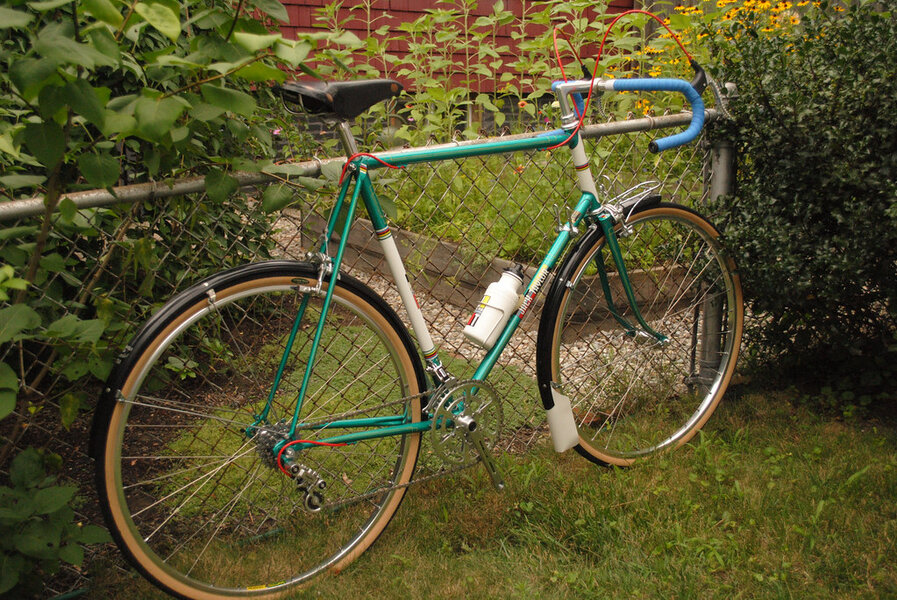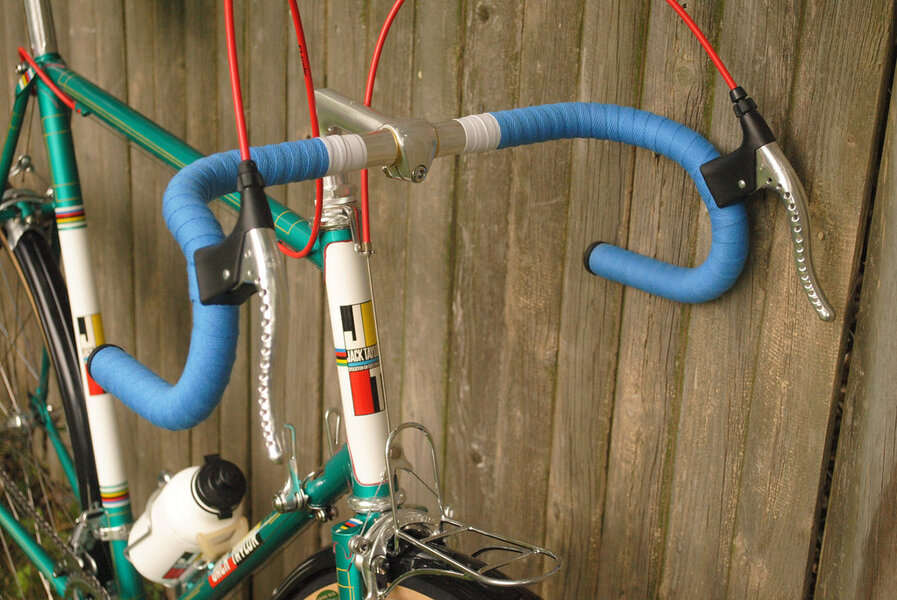Guinessisgoodforyou
rBotM Winner
How to start? Nice easy rolls of the tongue title  Any country, Tourers/Campeurs, Trade/Porteurs, Audax/Randonneurs, Commuters/Town. Practical, nicely made etc. Not into disc brakes but I have seen some rather nice examples, maybe some. The Luddite in me is finding writing that difficult. Here we go..
Any country, Tourers/Campeurs, Trade/Porteurs, Audax/Randonneurs, Commuters/Town. Practical, nicely made etc. Not into disc brakes but I have seen some rather nice examples, maybe some. The Luddite in me is finding writing that difficult. Here we go..
Any text or photos that need credits let me know and I will do so.
Taken from the Stockton on Tees web page.
While these existed mostly as social clubs with regularly weekend rides and touring events there was also a lot of interest in the competitive side of the sport. At that time massed start races were prohibited by the British Cycling bodies with the focus being on ‘Time-trialling’, where individual riders set off at set intervals of one or two minutes to race over a fixed course against the clock. On the continent the emphasis was very much on the type of competitive cycling we see today in the major ‘tours’ such as the Tour de France and the Giro d’Italia.
Specialist lightweight racing bikes were not easy to come by in those days and this led to a group of friends in Stockton deciding to build their own. In 1936 Jack Taylor, a Norton lad, and three of his mates acquired the necessary bits of tubing and lugs to make their own frames. With the brazing skills Jack had acquired as a pattern maker, he did all the of the frame construction himself in the shed in his mother’s garden. The rest of the components were bought in and the bikes fully assembled.
Being reasonably successful the bike-building continued and ‘Bell and Taylor ’ as they called themselves, (Lance Bell was one of the other three originals), built a number of bikes to order for friends and family.
While Jack continued to work full-time as a pattern maker, which he was to do throughout the war years, he could see the potential of moving into the bicycle manufacturing business full time. His three original partners were not prepared to take the gamble so eventually Jack persuaded two of his brothers, Norman and later Ken, to join him in his business enterprise. Jack was still only twenty when he taught younger brother Norman (14) how to weld. Norman was paid the princely sum of sixpence a week, worth about a pound today, for helping out in the business.
Jack Taylor building In 1942 Jack was able to purchase a plot of land in Church Road from Stockton Council. War-time restrictions meant the brothers were only allowed to purchase £100 worth of building materials but this didn’t deter them. Working whenever time and the elements allowed and doing everything by hand they built their own workshop on the plot. Each of the brothers put £20 into the business (Ken borrowed his £20 from Jack) and with their capital they purchased as much bicycle tubing as they could afford from the Reynolds Tube Company – the boys were in business.
As the war progressed the lugs used to join each of the frame sections together became harder to get. Jack began to consider different ways of joining the tubes which led to him taking a course in oxy-acetylene welding at night school. It was here that he first saw Sifbronze welding. This provided the answer Jack was looking for and led to the ‘lugless’ frames that Jack Taylor Cycles became famous for. One advantage of not using manufactured lugs was that the various angles on the frame could be adjusted to suit the rider or the use for which the bike was intended.
After the war the brothers would travel to the continent to see all of the latest developments in the world of cycling. They got to know many of the continental manufacturers and riders and brought back a lot of new ideas which they incorporated or modified for their own creations. As they developed their own skills they took on more of the actual bike building themselves and eventually it was Norman who did the welding and frame building, Ken did the wheel building and bike assembly and Jack did the paintwork with his distinctive colour schemes and box lining – as well as the book-keeping . The packing and despatching of the finished articles was Ken's job and many an expectant owner received a package marked with the legend ‘Have a nice ride’ in Ken’s hand.
With their own ideas on frame angles and geometry they soon found themselves being sought out to build bespoke frames for bikes and tandems. Their fame travelled far and wide and Jack Taylor hand-built cycles were in great demand, in Britain, on the continent and particularly in the United States. It wasn’t uncommon for the brothers to turn up at the workshop in Church Road to find cycling enthusiasts from all over the world wanting to see where the bikes were made and ordering bespoke machines for themselves.
As well as producing their lightweight racing bikes, the brothers began to specialise in tandems and tourist machines and even developed a single wheeled trailer that could be pulled behind a conventional tourer. They also built some of the earliest mountain bikes for the American market and the odd uni-cycle.
The brothers were no mean cyclists themselves with a keen interest in competitive cycling. Enthusiastic members of Stockton Wheelers Cycling Club, they found themselves with a life-time ban from the club for taking part in a massed start road race from Morecambe to Bradford which had been organised by the renegade British League of Racing Cyclists (The ruling has since been overturned). At that time the National Cyclist’s Union were the official organisers of cycle racing events in Britain. In later years these two organisations joined forces to form the British Cycling Federation.
In 1945 all three brothers rode in the Victory Cycling Marathon, a six-day stage race from Brighton to Glasgow. At this time Ken was working at a local company that refused to give him leave to take part in the race. He decided to race anyway and on returning to work was dismissed. This was the opportunity he needed to join his brothers working full-time in the company. The brothers were to ride in the Brighton to Glasgow race five years in succession and took part in a number of the Tours of Britain.
Alas, the introduction of ‘affordable’ motor cars in the fifties and sixties saw a decline in the demand for bicycles in Britain although the popularity of the Jack Taylor name continued in the United States where the demand for their tandems was as strong as ever. At its peak the company employed nine people but by the 1980s the team of three brothers was again keeping the business going by supplying their hand-built top-quality frames and bikes to discerning cyclists across the globe. Even so, their fame was still so great that in 1986 the BBC made a short film about the brothers and their bike building. Called 'The Bike Brothers', it is well worth a visit to Youtube...
In 1990 the ‘works’, as the brothers called their workshop in Church Road, closed for the last time. Norman and Ken carried on building the odd frame for some years but the days of Jack Taylor Cycles were over. The brothers had produced more than 8500 quality hand–built machines between them over the years.
Norman passed away in 2008 at the age of 85, older brother Jack passed away in November 2014 at the age of 96. Their name lives on in the many bikes and ‘Jack Taylor Owners Clubs’ that are dotted around the globe, they really did put Stockton on the map.
This is a Jack Taylor Clubman, which was really the most well-built and versatile road bike you could have ridden in the early ’70′s. Long before the bike world made distinctions between “Endurance” and “Racing” frame geometry, there were bikes like these that handled but were comfortable enough to ride on rough roads for hours on end.
The equipment choices on display here are pretty straight forward for a high-end road bike of the era. The racing standard, Campagnolo Nuovo Record derailleurs and shifters are here. Instead of a matching Campag crankset we have a Specialties TA 3-arm crank. The most likely reason for this choice at the time would have been a greater range of chainring sizes to choose from. The handlebars and stem are made by Cinelli. Wrights saddle and a Regina 5-speed freewheel. Altenburger Synchron calipers. Bluemels Club Special mudguards.
Any text or photos that need credits let me know and I will do so.
Taken from the Stockton on Tees web page.
Jack Taylor Cycles
In the days leading up to the second world war cycling in Britain was in its heyday, with hundreds of cycling clubs up and down the land.While these existed mostly as social clubs with regularly weekend rides and touring events there was also a lot of interest in the competitive side of the sport. At that time massed start races were prohibited by the British Cycling bodies with the focus being on ‘Time-trialling’, where individual riders set off at set intervals of one or two minutes to race over a fixed course against the clock. On the continent the emphasis was very much on the type of competitive cycling we see today in the major ‘tours’ such as the Tour de France and the Giro d’Italia.
Specialist lightweight racing bikes were not easy to come by in those days and this led to a group of friends in Stockton deciding to build their own. In 1936 Jack Taylor, a Norton lad, and three of his mates acquired the necessary bits of tubing and lugs to make their own frames. With the brazing skills Jack had acquired as a pattern maker, he did all the of the frame construction himself in the shed in his mother’s garden. The rest of the components were bought in and the bikes fully assembled.
Being reasonably successful the bike-building continued and ‘Bell and Taylor ’ as they called themselves, (Lance Bell was one of the other three originals), built a number of bikes to order for friends and family.
While Jack continued to work full-time as a pattern maker, which he was to do throughout the war years, he could see the potential of moving into the bicycle manufacturing business full time. His three original partners were not prepared to take the gamble so eventually Jack persuaded two of his brothers, Norman and later Ken, to join him in his business enterprise. Jack was still only twenty when he taught younger brother Norman (14) how to weld. Norman was paid the princely sum of sixpence a week, worth about a pound today, for helping out in the business.
Jack Taylor building In 1942 Jack was able to purchase a plot of land in Church Road from Stockton Council. War-time restrictions meant the brothers were only allowed to purchase £100 worth of building materials but this didn’t deter them. Working whenever time and the elements allowed and doing everything by hand they built their own workshop on the plot. Each of the brothers put £20 into the business (Ken borrowed his £20 from Jack) and with their capital they purchased as much bicycle tubing as they could afford from the Reynolds Tube Company – the boys were in business.
As the war progressed the lugs used to join each of the frame sections together became harder to get. Jack began to consider different ways of joining the tubes which led to him taking a course in oxy-acetylene welding at night school. It was here that he first saw Sifbronze welding. This provided the answer Jack was looking for and led to the ‘lugless’ frames that Jack Taylor Cycles became famous for. One advantage of not using manufactured lugs was that the various angles on the frame could be adjusted to suit the rider or the use for which the bike was intended.
After the war the brothers would travel to the continent to see all of the latest developments in the world of cycling. They got to know many of the continental manufacturers and riders and brought back a lot of new ideas which they incorporated or modified for their own creations. As they developed their own skills they took on more of the actual bike building themselves and eventually it was Norman who did the welding and frame building, Ken did the wheel building and bike assembly and Jack did the paintwork with his distinctive colour schemes and box lining – as well as the book-keeping . The packing and despatching of the finished articles was Ken's job and many an expectant owner received a package marked with the legend ‘Have a nice ride’ in Ken’s hand.
With their own ideas on frame angles and geometry they soon found themselves being sought out to build bespoke frames for bikes and tandems. Their fame travelled far and wide and Jack Taylor hand-built cycles were in great demand, in Britain, on the continent and particularly in the United States. It wasn’t uncommon for the brothers to turn up at the workshop in Church Road to find cycling enthusiasts from all over the world wanting to see where the bikes were made and ordering bespoke machines for themselves.
As well as producing their lightweight racing bikes, the brothers began to specialise in tandems and tourist machines and even developed a single wheeled trailer that could be pulled behind a conventional tourer. They also built some of the earliest mountain bikes for the American market and the odd uni-cycle.
The brothers were no mean cyclists themselves with a keen interest in competitive cycling. Enthusiastic members of Stockton Wheelers Cycling Club, they found themselves with a life-time ban from the club for taking part in a massed start road race from Morecambe to Bradford which had been organised by the renegade British League of Racing Cyclists (The ruling has since been overturned). At that time the National Cyclist’s Union were the official organisers of cycle racing events in Britain. In later years these two organisations joined forces to form the British Cycling Federation.
In 1945 all three brothers rode in the Victory Cycling Marathon, a six-day stage race from Brighton to Glasgow. At this time Ken was working at a local company that refused to give him leave to take part in the race. He decided to race anyway and on returning to work was dismissed. This was the opportunity he needed to join his brothers working full-time in the company. The brothers were to ride in the Brighton to Glasgow race five years in succession and took part in a number of the Tours of Britain.
Alas, the introduction of ‘affordable’ motor cars in the fifties and sixties saw a decline in the demand for bicycles in Britain although the popularity of the Jack Taylor name continued in the United States where the demand for their tandems was as strong as ever. At its peak the company employed nine people but by the 1980s the team of three brothers was again keeping the business going by supplying their hand-built top-quality frames and bikes to discerning cyclists across the globe. Even so, their fame was still so great that in 1986 the BBC made a short film about the brothers and their bike building. Called 'The Bike Brothers', it is well worth a visit to Youtube...
In 1990 the ‘works’, as the brothers called their workshop in Church Road, closed for the last time. Norman and Ken carried on building the odd frame for some years but the days of Jack Taylor Cycles were over. The brothers had produced more than 8500 quality hand–built machines between them over the years.
Norman passed away in 2008 at the age of 85, older brother Jack passed away in November 2014 at the age of 96. Their name lives on in the many bikes and ‘Jack Taylor Owners Clubs’ that are dotted around the globe, they really did put Stockton on the map.
This is a Jack Taylor Clubman, which was really the most well-built and versatile road bike you could have ridden in the early ’70′s. Long before the bike world made distinctions between “Endurance” and “Racing” frame geometry, there were bikes like these that handled but were comfortable enough to ride on rough roads for hours on end.
The equipment choices on display here are pretty straight forward for a high-end road bike of the era. The racing standard, Campagnolo Nuovo Record derailleurs and shifters are here. Instead of a matching Campag crankset we have a Specialties TA 3-arm crank. The most likely reason for this choice at the time would have been a greater range of chainring sizes to choose from. The handlebars and stem are made by Cinelli. Wrights saddle and a Regina 5-speed freewheel. Altenburger Synchron calipers. Bluemels Club Special mudguards.
Attachments
-
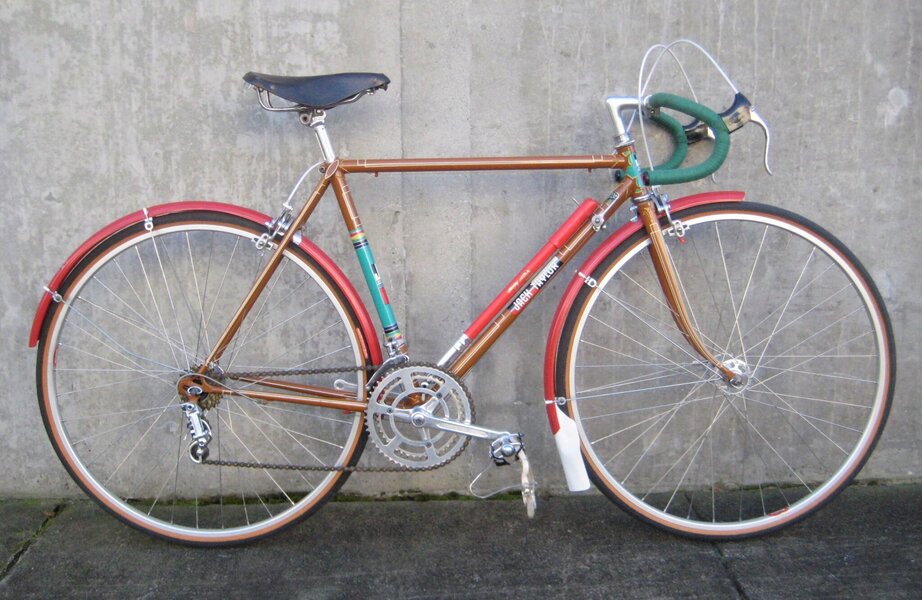 Jack Taylor Clubman 19721.jpg431.1 KB · Views: 49
Jack Taylor Clubman 19721.jpg431.1 KB · Views: 49 -
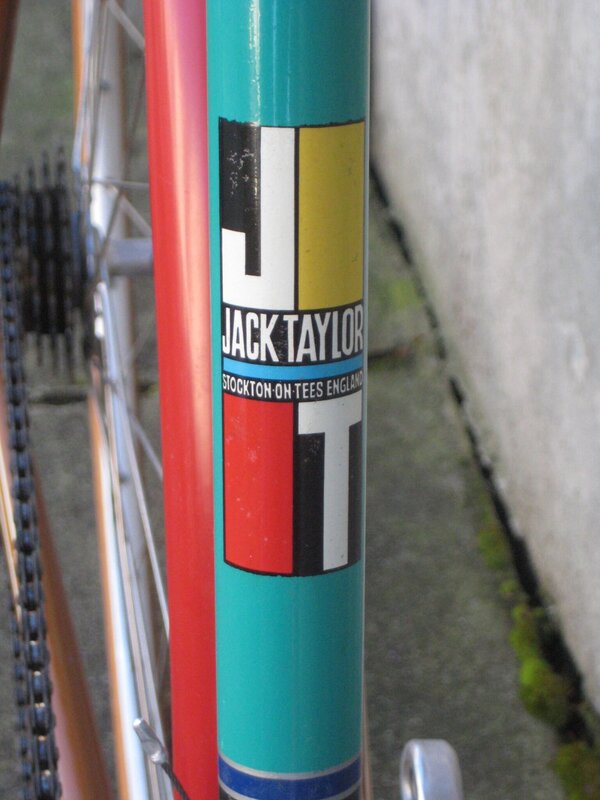 Jack Taylor Clubman 197210.jpg341.9 KB · Views: 46
Jack Taylor Clubman 197210.jpg341.9 KB · Views: 46 -
 Jack Taylor Clubman 19729.jpg420.2 KB · Views: 43
Jack Taylor Clubman 19729.jpg420.2 KB · Views: 43 -
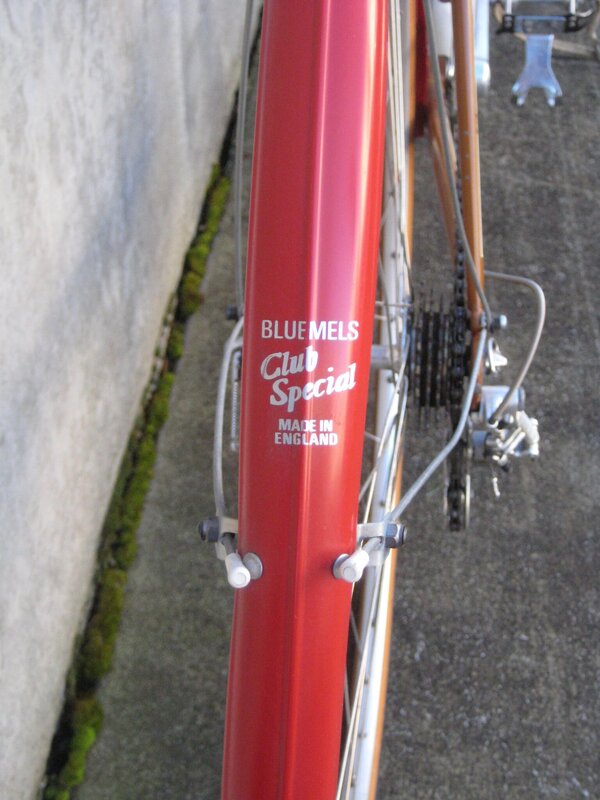 Jack Taylor Clubman 19728.jpg371.6 KB · Views: 37
Jack Taylor Clubman 19728.jpg371.6 KB · Views: 37 -
 Jack Taylor Clubman 19727.jpg413.8 KB · Views: 36
Jack Taylor Clubman 19727.jpg413.8 KB · Views: 36 -
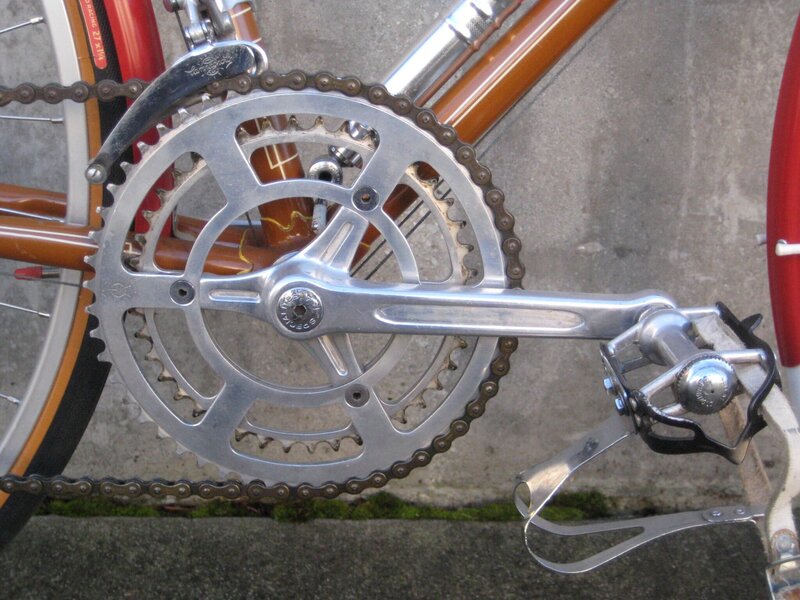 Jack Taylor Clubman 19726.jpg463.5 KB · Views: 40
Jack Taylor Clubman 19726.jpg463.5 KB · Views: 40 -
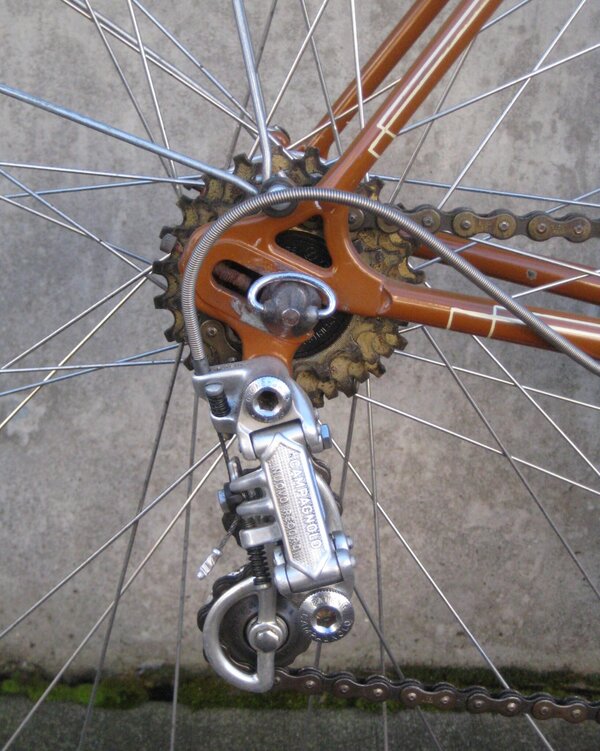 Jack Taylor Clubman 19725.jpg483.6 KB · Views: 38
Jack Taylor Clubman 19725.jpg483.6 KB · Views: 38 -
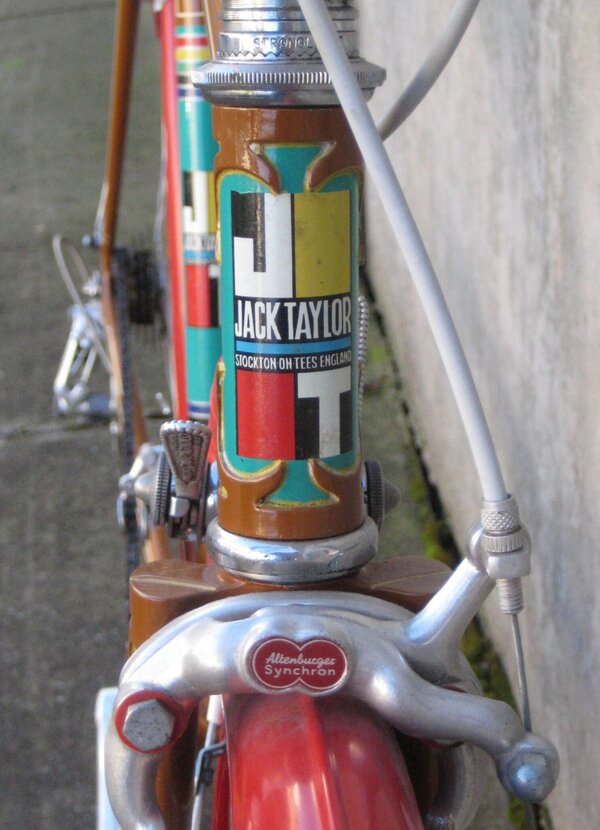 Jack Taylor Clubman 19724.jpg350.4 KB · Views: 35
Jack Taylor Clubman 19724.jpg350.4 KB · Views: 35 -
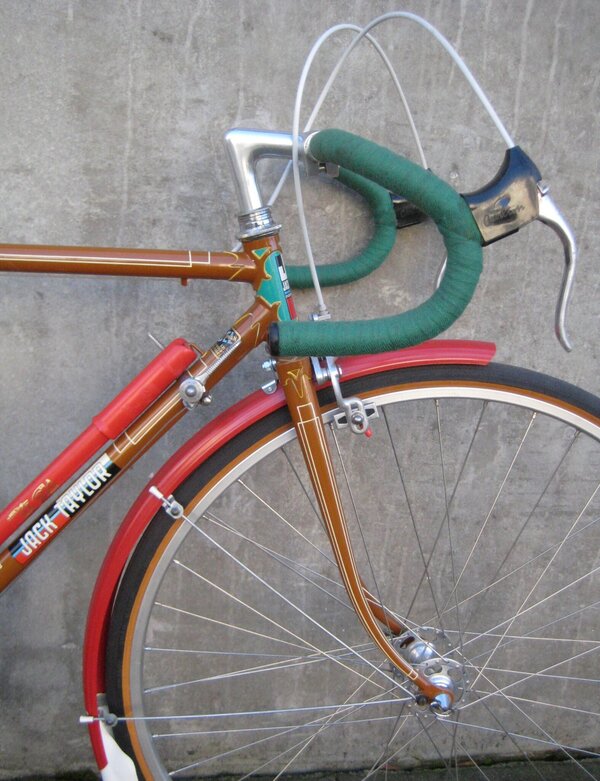 Jack Taylor Clubman 19723.jpg471.7 KB · Views: 34
Jack Taylor Clubman 19723.jpg471.7 KB · Views: 34 -
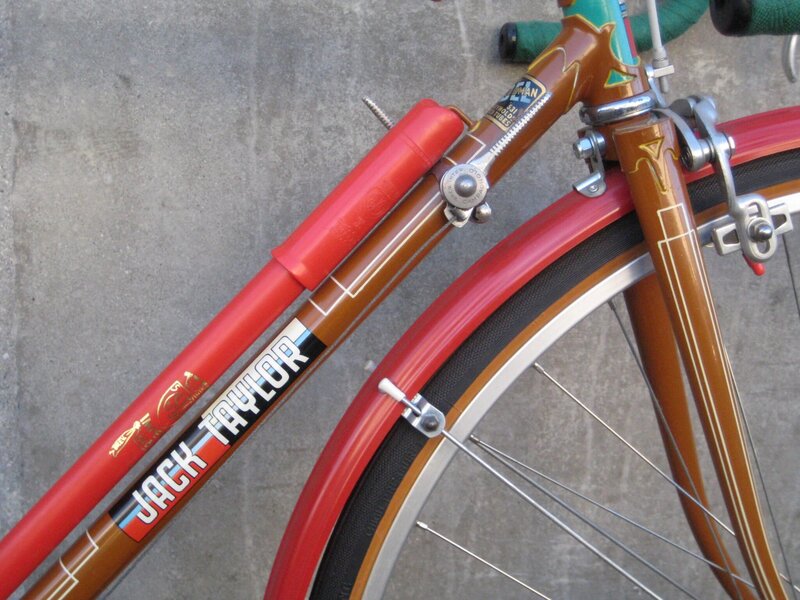 Jack Taylor Clubman 19722.jpg453.7 KB · Views: 38
Jack Taylor Clubman 19722.jpg453.7 KB · Views: 38
Last edited:
